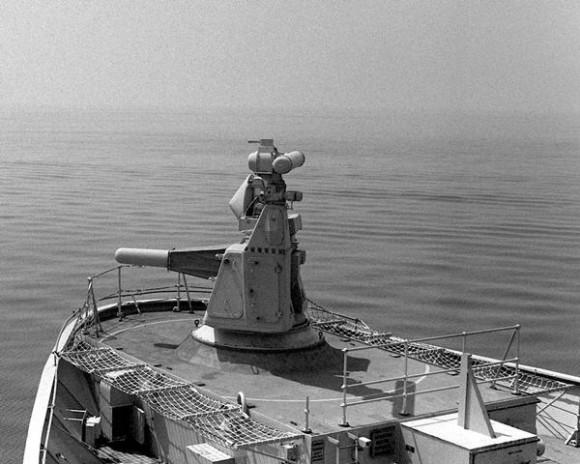

The A-10 Thunderbolt is arguably the best close-air support plane in history thanks, primarily, to its GAU-8 cannon. The seven-barreled, 30mm Gatling gun holds 1,129 rounds and can chew up a modern tank. Despite its massive success in the air, the GAU-8 has proven to be far more versatile. Believe it or not, the GAU-8 is also at the heart of a last-ditch, anti-missile system used by a number of navies. That system is called the Goalkeeper.
The Goalkeeper uses a combination of sophisticated radars to detect incoming threats, typically missiles, and fires rounds from its cannon to obliterate the target before it can harm the ship. In function, this defense system is very similar to the U.S.’s Phalanx — the albino-R2D2 looking thing found on virtually every American ship built since the 1980s. The Phalanx, by comparison, uses the M61, a 20mm Gatling gun. It’s been upgraded over the years and has an effective range of roughly one mile.

The Phalanx, however, cannot completely prevent a ship from taking damage — the system’s range is too short to guarantee full diffusion. That being said, the damage a ship endures after an incoming projectile is struck by the gun is from fragments rather than a direct hit. The ship may spend a lot of time replacing radars and fixing other gear, but it beats being sunk. The Goalkeeper, on the other hand, intends to reduce the risk of even that damage
According to NavWeaps.com, the Goalkeeper has almost twice the effective range of the Phalanx. The longer range and more powerful rounds mean that when an enemy missile is hit, not as many fragments hit the ship — and those that do will do so with much less energy. This reduces the damage done to the ship and can even make the difference between keeping a ship in the fight and going back to port for lengthy repairs.

The Royal Netherlands Navy and the Royal Navy initially used the system. South Korea later acquired a number of the systems for their surface combatants and the system now serves with the Peruvian, Belgian, Qatari, Chilean, and Portuguese navies.
See the Goalkeeper bring BRRRRRT to a ship in the video below!
